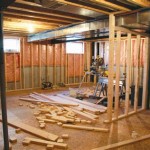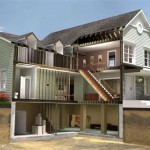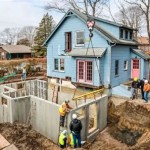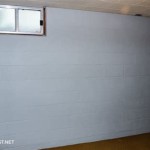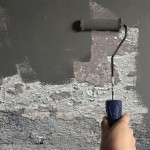How Much To Fix Water Damage In Basement Floor
Water damage in a basement floor is a common issue for homeowners, stemming from various sources such as flooding, leaks, condensation, and improper drainage. The cost to repair this damage can vary significantly depending on the extent of the problem, the materials affected, and the necessary remediation steps. Understanding the potential costs involved is crucial for budgeting and making informed decisions regarding repairs.
Several factors influence the overall expense of fixing water damage to a basement floor. These encompass the source and severity of the water intrusion, the type of flooring material present, the presence of mold or other contaminants, and the complexity of the required repairs. Each element contributes to the final cost, making accurate assessment essential.
Assessment of Water Damage and Initial Steps
The first step in addressing water damage is a thorough assessment. This often involves identifying the water source and determining the extent of the damage. A professional inspection may be necessary, particularly if the source is not immediately apparent or if there's suspicion of hidden damage. The inspection typically costs between $100 and $500, depending on the scope and the use of specialized equipment like moisture meters and thermal imaging cameras.
Once the damage is assessed, water extraction is usually the next immediate priority. This process involves removing standing water using pumps and specialized vacuums. The cost of water extraction varies based on the volume of water and the accessibility of the affected area. This service generally costs between $500 and $1,500.
Following water extraction, the drying process begins. Industrial-grade dehumidifiers and air movers are utilized to reduce moisture levels and prevent mold growth. The drying process can take several days, and the cost depends on the equipment rental, energy consumption, and the size of the affected area. Expect to pay between $200 and $500 per day for professional drying services.
Cost of Repairs Based on Flooring Type
The cost to repair or replace a basement floor heavily depends on the type of flooring material. Different materials react differently to water and require varying levels of repair or replacement.
Concrete Floors: If the basement floor is concrete, the damage may manifest as cracks, spalling, or efflorescence (a white, powdery deposit). Minor cracks can often be repaired with epoxy or concrete patching compounds, costing between $50 and $200 for materials. More significant cracks or structural damage may require professional repair, ranging from $500 to $2,000. If the concrete is severely damaged and needs replacement, the cost can rise significantly, potentially reaching $5 to $10 per square foot for demolition and new concrete pouring.
Tile Floors: Water damage can cause tiles to loosen, crack, or become discolored. If only a few tiles are affected, the repair might involve replacing the damaged tiles, costing between $5 to $15 per tile, including labor and materials. However, if the subfloor is damaged, the entire tile floor may need to be removed and replaced. This can cost between $8 and $20 per square foot, including demolition, subfloor repair, and new tile installation.
Carpet: Carpeting in basements is particularly susceptible to water damage, as it absorbs moisture and provides a breeding ground for mold. If the carpet is saturated with water, it likely needs to be removed and disposed of. The cost of carpet removal and disposal typically ranges from $1 to $3 per square foot. Replacing the carpet can cost between $3 and $8 per square foot, depending on the quality and type of carpet.
Laminate or Wood Flooring: Laminate and wood flooring are highly vulnerable to water damage. Water can cause them to warp, swell, and delaminate. In most cases, water-damaged laminate or wood flooring needs to be completely removed and replaced. The cost of removal and disposal is similar to carpet, at $1 to $3 per square foot. Replacing laminate flooring can cost between $3 and $7 per square foot, while replacing wood flooring can range from $5 to $15 per square foot, depending on the type of wood.
Mold Remediation and Prevention
Mold growth is a common consequence of water damage in basements. Even small amounts of water can lead to mold within 24 to 48 hours. Mold remediation is an essential part of the repair process to ensure a healthy indoor environment.
The cost of mold remediation depends on the extent of the mold growth and the area affected. Minor mold growth (less than 10 square feet) may be addressed with DIY mold removal products, costing between $50 and $100. However, larger mold infestations require professional remediation. Professional mold remediation typically costs between $10 and $30 per square foot, depending on the severity of the mold and the location.
In addition to removing existing mold, it's crucial to implement preventative measures to avoid future mold growth. This includes addressing the source of the water intrusion, improving ventilation in the basement, and using mold-resistant materials. Applying a waterproof sealant to the basement floor can also help prevent future water damage and mold growth. The cost of these preventive measures can vary from a few hundred dollars for sealant application to several thousand dollars for major drainage improvements.
Furthermore, porous materials such as drywall or insulation that have been exposed to water may require replacement. The cost associated with removing and replacing drywall or insulation varies, typically between $1 and $5 per square foot depending on the material and installation requirements. Depending on the framing materials used, it may also be necessary to treat or replace them as well.
The removal of contaminated items that cannot be properly cleaned and sanitized will also contribute to the overall cost. These can include furniture, boxes, or other personal belongings that have been affected by the water damage and mold growth. The cost associated with the removal and disposal of these items can range depending on the volume and type of materials, adding to the final remediation費用.
Following the completion of mold remediation, it is often advisable to conduct post-remediation verification. This process involves air quality testing and visual inspections to ensure that mold levels have returned to normal and that the remediation efforts were successful. The cost of post-remediation verification can range from $300 to $800, depending on the extent of testing and the size of the area examined.
Additional Considerations and Costs
Besides the direct costs of water extraction, drying, flooring repair, and mold remediation, other expenses may arise during the process. These include plumbing repairs, structural repairs, and insurance deductibles.
If the water damage originated from a plumbing leak, repairing the leak is essential to prevent future problems. Plumbing repairs can range from a few hundred dollars for minor leaks to several thousand dollars for major pipe replacements. Structural repairs may be necessary if the water damage has compromised the integrity of the basement walls or foundation. These repairs can be costly, potentially ranging from $1,000 to $10,000 or more, depending on the extent of the damage.
Homeowners insurance may cover some of the costs associated with water damage, depending on the policy and the cause of the damage. However, most policies have deductibles that the homeowner must pay out of pocket. Deductibles can range from $500 to $5,000 or more, depending on the policy. It's essential to review the insurance policy and consult with an insurance agent to understand the coverage and potential out-of-pocket expenses.
In some cases, permits may be required for certain types of repairs, such as structural repairs or plumbing work. The cost of permits varies depending on the location and the scope of the work. Failing to obtain necessary permits can result in fines and delays.
The process of dealing with water damage can be disruptive and time-consuming. It may be necessary to relocate temporarily while repairs are being made. The cost of temporary housing can vary depending on the location and the duration of the relocation.
Furthermore, it is important to account for the cost of sanitizing and disinfecting the affected areas. Water damage can introduce bacteria and other contaminants, making it necessary to thoroughly clean and disinfect the space. This process involves the use of antimicrobial solutions and specialized equipment to ensure a safe and healthy environment. The cost of sanitizing and disinfecting can range from a few hundred to a few thousand dollars, depending on the size of the area and the level of contamination.
Proper ventilation and air circulation are essential for preventing future moisture problems and mold growth. Consider investing in a dehumidifier or improving the existing ventilation system to maintain optimal humidity levels. The cost of a dehumidifier can range from $100 to $500, while the cost of improving ventilation can vary depending on the complexity of the project.
Addressing water damage in a basement floor involves a multi-faceted approach, encompassing assessment, water extraction, drying, repairs, mold remediation, and prevention. The total cost can range from a few hundred dollars for minor repairs to tens of thousands of dollars for extensive damage. Thorough assessment, prompt action, and professional assistance are crucial to mitigating the damage and ensuring a safe and healthy basement environment.

Average Basement Flooding Repair Costs By Labor Materials And More Forbes Home

Fixr Com Flooded Basement Cleanup Cost Flooding Restoration

How Much Do Flood Damage Repairs Cost Homeserve Usa

How Much Does Basement Water Damage Repair Cost Articles321

How To Clean A Flooded Basement News And Events For Systems Inc

7 Reasons Water Is Seeping Through Your Basement Floor

The Best Methods For Basement Leak Repair Acculevel

Q A Drying Out Water Damaged Basement Addressing Issues

Basement Waterproofing Costs Estimated To Fix A Wet

Water Damaged Floor Repair Cost And Fixing Tips Reflipper Net
Related Posts

